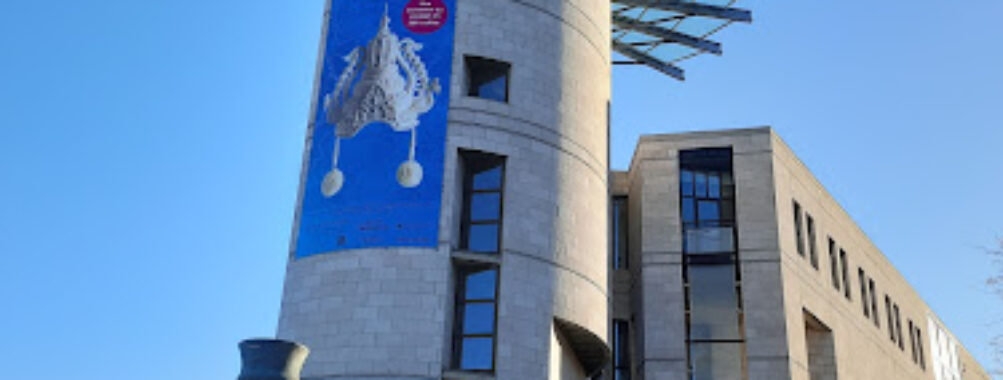
Montreal Museum of Archaeology and History
Table of Contents
Description
The Montreal Museum of Archaeology and History presents a layered, almost theatrical account of the city’s origins and evolution, sitting amid the cobbled streets of Old Montreal near Place Royale. Housed in historic masonry that literally preserves fragments of the past beneath its floors, the museum blends rigorous archaeology with playful, contemporary interpretation. Visitors walk above and around excavated remains, spotting foundations, wells and artifacts that once belonged to the earliest settlers and Indigenous occupants of the area. The effect is equal parts detective story and urban time capsule.
Inside, the emphasis is on storytelling through objects, multimedia and hands-on displays. Permanent exhibitions chart the archaeology and history of Montreal from pre-contact landscapes to the birth of Fort Ville-Marie and the city that grew afterward. Interactive exhibits encourage curiosity: touchable reproductions, dig simulations, and family-friendly activity stations that make complex history accessible to kids without talking down to adults. At moments the museum leans into immersive multimedia shows that condense centuries into twenty or thirty minutes of sound, light and projection. Those presentations are a favorite for first-time visitors because they orient you quickly to the site and set the stage for exploring the galleries.
The museum’s archaeological work is not all behind-the-scenes. Visitors can often see active digs or recent finds presented as part of rotating displays, which is thrilling if someone in the group is the sort of person who collects postcards of hard hats and excavation grids. The displays feature tangible artifacts—everyday objects, building fragments, coins, pottery shards—that add texture to the story of life at the city’s birth and through subsequent waves of development. And because the institution sits atop actual archaeological layers, the galleries create a rare dialogue between curated objects and the physical traces of the city itself.
Accessibility and visitor comfort are part of the design. There are wheelchair accessible entrances and restroom facilities, and a restaurant area where visitors can take a break without wandering far from the museum experience. Practical services, including onsite ticketing and staff-led tours, help first-time tourists make sense of a site that covers a lot of ground—chronologically and physically. Families find the museum accommodating: kids-oriented displays and interactive corners make it a sensible stop for travelers exploring Old Montreal.
For those who like a bit of context, the museum is also a civic chronicle. Exhibits discuss the social, economic and cultural forces that shaped Montreal over time: migration, trade, urban planning, and daily routines of residents across centuries. The approach balances artifact-driven storytelling with maps, timelines and short film segments, so people who prefer data and those who prefer narrative both leave satisfied. The curatorial voice leans toward clarity and a measured enthusiasm for discovery rather than sensationalism.
Not everything is perfect, and the experience reflects that. At peak tourist times the galleries can become crowded, which makes quiet contemplation harder and some of the subtler displays easier to miss. Signage occasionally reads dense to non-specialists, and some visitors wish for longer captions or more bilingual interpretation at every station. But most visitors find these to be small trade-offs for the rare chance to stand above preserved archaeological layers while learning the foundational story of Montreal. The museum’s programming calendar also includes temporary exhibitions that change the tone and depth of content throughout the year, so repeat visitors can discover new angles on local history without feeling like they’ve seen it all.
Practical expectations: a typical visit lasts between 90 minutes and two hours if visitors focus on the permanent galleries and a multimedia show; add another hour for special exhibitions or guided tours. The layout is compact but dense, so people who enjoy slow looking will be rewarded. Photography for personal use is usually fine in most public areas, though certain displays and temporary exhibitions may restrict flash or tripods. Staff are generally helpful and willing to point out hidden details—spotlighted structural remains, interesting inscriptions, the exact place where the city’s earliest street grid took shape.
For travelers trying to maximize time in Old Montreal, the museum plays very nicely with a walking itinerary: it pairs well with a stroll through Place Royale, stops at nearby cafés, and even a detour to local galleries. Because it is both an archaeological site and a history museum, it offers context that makes the surrounding streets read differently afterward; the district’s stones and facades begin to look like pages in a book rather than mere scenery. In short, the Montreal Museum of Archaeology and History rewards curiosity. It is not just a repository of old things but a living interpretation of how a city grows, layers on layer, through centuries of human activity.
Location
Places to Stay Near Montreal Museum of Archaeology and History
Find and Book a Tour
Explore More Travel Guides
No reviews found! Be the first to review!